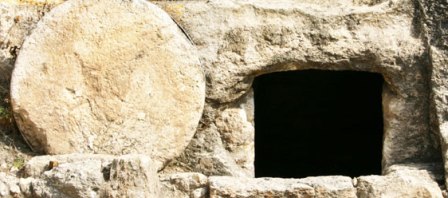Jesus’ Resurrection: Fact or Fiction?
By Rusty Wright
At Easter, some might wonder what all the fuss is about. Who cares? What difference does it make if Jesus rose from the dead?
It makes all the difference in the world. If Christ did not rise, then thousands of believers have died as martyrs for a hoax.
If he did rise, then he is still alive and can offer peace to troubled, hurting lives.
Countless scholars – among them the apostle Paul, Augustine, Sir Isaac Newton and C.S. Lewis – believed in the resurrection. We need not fear committing intellectual suicide by believing it also. Where do the facts lead?
Paul, a first-century skeptic-turned-believer, wrote that “Christ died for our sins…he was buried…he was raised on the third day…he appeared to Cephas [Peter], and then to the Twelve [Disciples]. After that, he appeared to more than five hundred…at the same time, most of whom are still living.” Consider four pieces of evidence:
1. The explosive growth of the Christian movement.
Within a few weeks after Jesus was crucified, a movement arose which, by the later admission of its enemies, “upset the world.” What happened to ignite this movement shortly after its leader had been executed?
2. The disciples’ changed lives.
After Jesus’ arrest and crucifixion, most of the disciples fled in fear. Peter denied three times that he was a follower of Jesus. (The women were braver and stayed to the end.) Yet ten out of the eleven disciples (Judas committed suicide) were martyred for their faith. According to traditions, Peter was crucified upside down; Thomas was skewered; John was boiled in oil but survived. What turned these cowards into heroes? Each believed he had seen Jesus alive again.
3. The empty tomb.
Jesus’ corpse was removed from the cross, wrapped like a mummy and placed in a solid-rock tomb. A one-and-a-half to two-ton stone was rolled into a slightly depressed groove to seal the tomb’s entrance.
A “Green Beret”-like unit of Roman soldiers guarded the grave. Sunday morning, the stone was found rolled away, the body was gone but the graveclothes were still in place. What happened?
Did Christ’s friends steal the body? Perhaps one of the women sweet-talked (karate-chopped?) the guards while the others moved the stone and tiptoed off with the body. Or maybe Peter (remember his bravery) or Thomas (Doubting Thomas) overpowered the guards, stole the body, then fabricated – and died for – a resurrection myth.
These theories hardly seem plausible. The guard was too powerful, the stone too heavy and the disciples too timid to attempt such a feat.
Did Christ’s enemies steal the body? If Romans or Jewish religious leaders had the body, surely they would have exposed it publicly and Christianity would have died out. They didn’t, and it didn’t.
The “Swoon Theory” supposes that Jesus didn’t really die but was only unconscious. The expert Roman executioners merely thought he was dead. After a few days in the tomb without food or medicine, the cool air revived him.
He burst from the 100 pounds of graveclothes, rolled away the stone with his nail-pierced hands, scared the daylights out of the Roman soldiers, walked miles on wounded feet and convinced his disciples he’d been raised from the dead. This one is harder to believe than the resurrection itself.
4. The appearances of the risen Christ.
For 40 days after his death, many different people said they saw Jesus alive. Witnesses included a woman, a shrewd tax collector, several fishermen and over 500 people at once. These claims provide further eyewitness testimony for the resurrection.
As a skeptic, I realized that attempts to explain away the evidences run into a brick wall of facts that point to one conclusion: Christ is risen.
The above does not constitute an exhaustive proof, rather a reasoned examination of the evidence. Each interested person should evaluate the evidence and decide if it makes sense. Of course, the truth or falsity of the resurrection is a matter of historical fact and is not dependent on anyone’s belief. If the facts support the claim, one can conclude that he arose. In any case, mere intellectual assent to the facts does little for one’s life.
A major evidence comes experientially, in personally receiving Jesus’ free gift of forgiveness. He said, “I stand at the door and knock; if anyone hears my voice and opens the door, I will come in to him [or her].”
Worth considering?
Copyright © 2020 Rusty Wright
Rusty Wright is an author and lecturer who has spoken on six continents. He holds Bachelor of Science (psychology) and Master of Theology degrees from Duke and Oxford universities, respectively. www.RustyWright.com
Editors: Note picture below. Right click on image to access image file.
